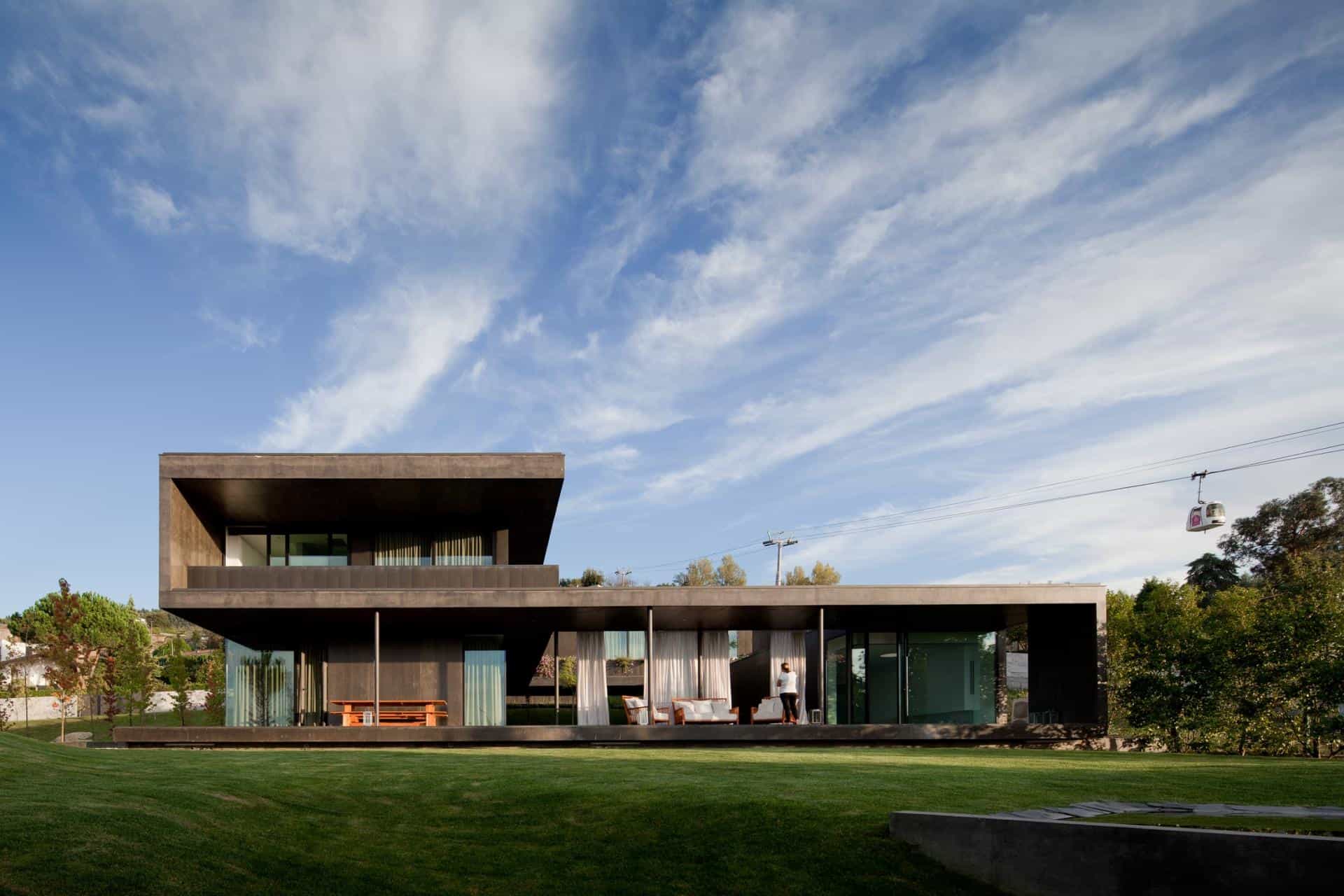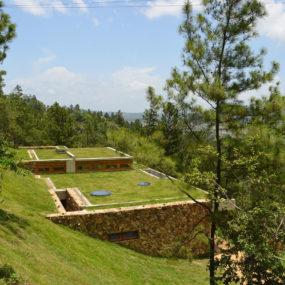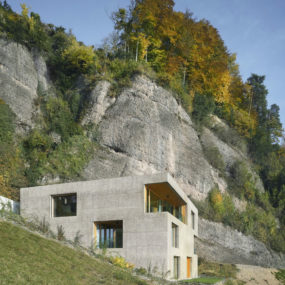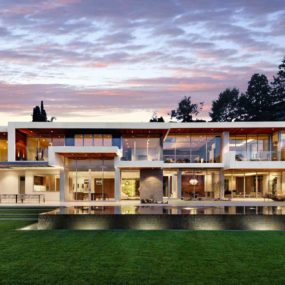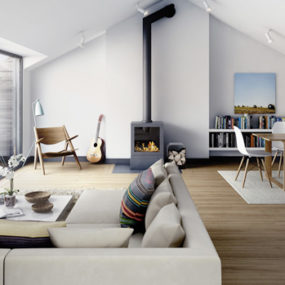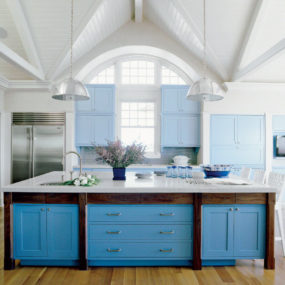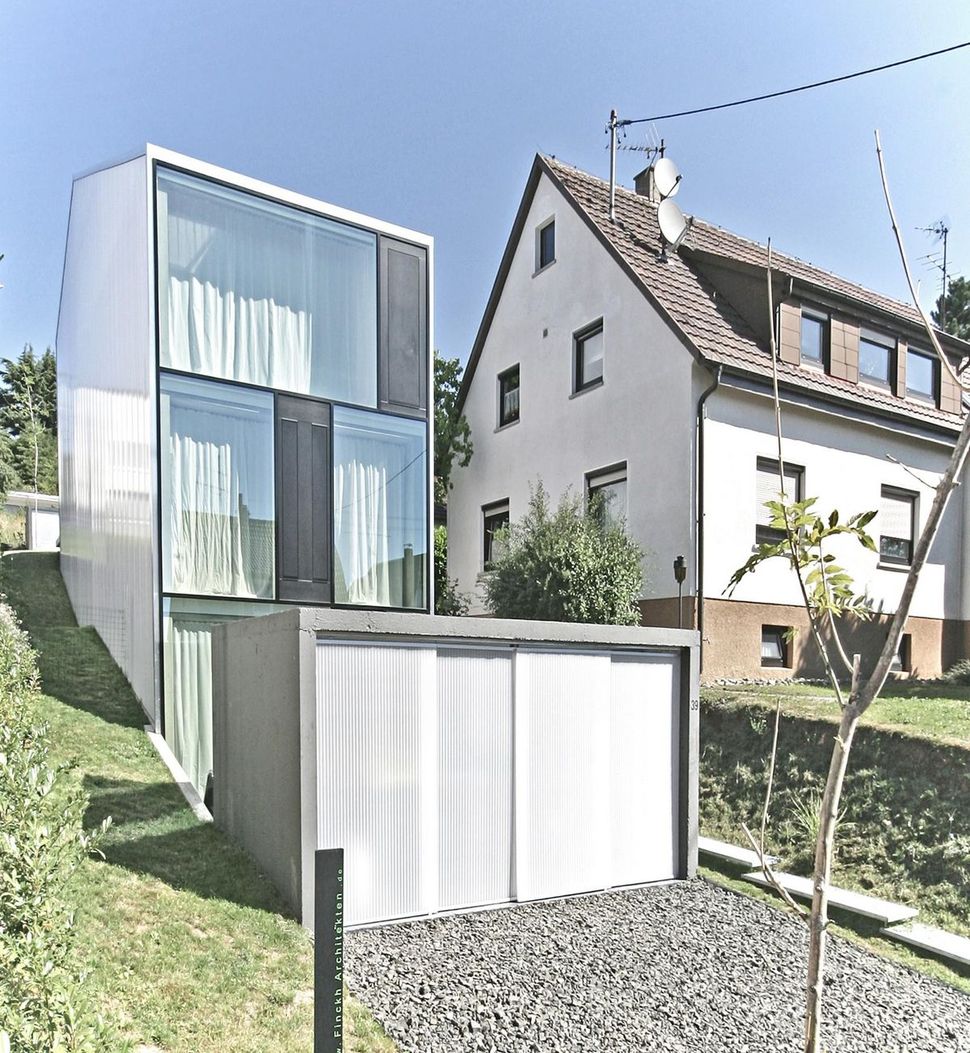
Built in a German town among many more traditional houses, this family dwelling by Finckh Architekten is made tall and thin to fit comfortably on a long townhouse-style lot. A very minimal yet comfortable construction, the four-level house is built partially within a hillside to diminish its profile from each end, and is comprised almost entirely of concrete, glass, and glossy white panels. From below the hillside, the house has a smooth three-story facade, dominated by its glass window area. Though this arrangement may seem to compromise privacy in such a populated area, built-in curtains are used in each room to close them off if need be, and essential private rooms (such as bathrooms) are kept inside away from the windows. In addition, the house’s side panels are opaque, allowing light through to passively illuminate and heat the building by day. Though it’s a definitively modern construction, the home’s design is minimal enough to stand out architecturally without attracting too much attention from passers-by.
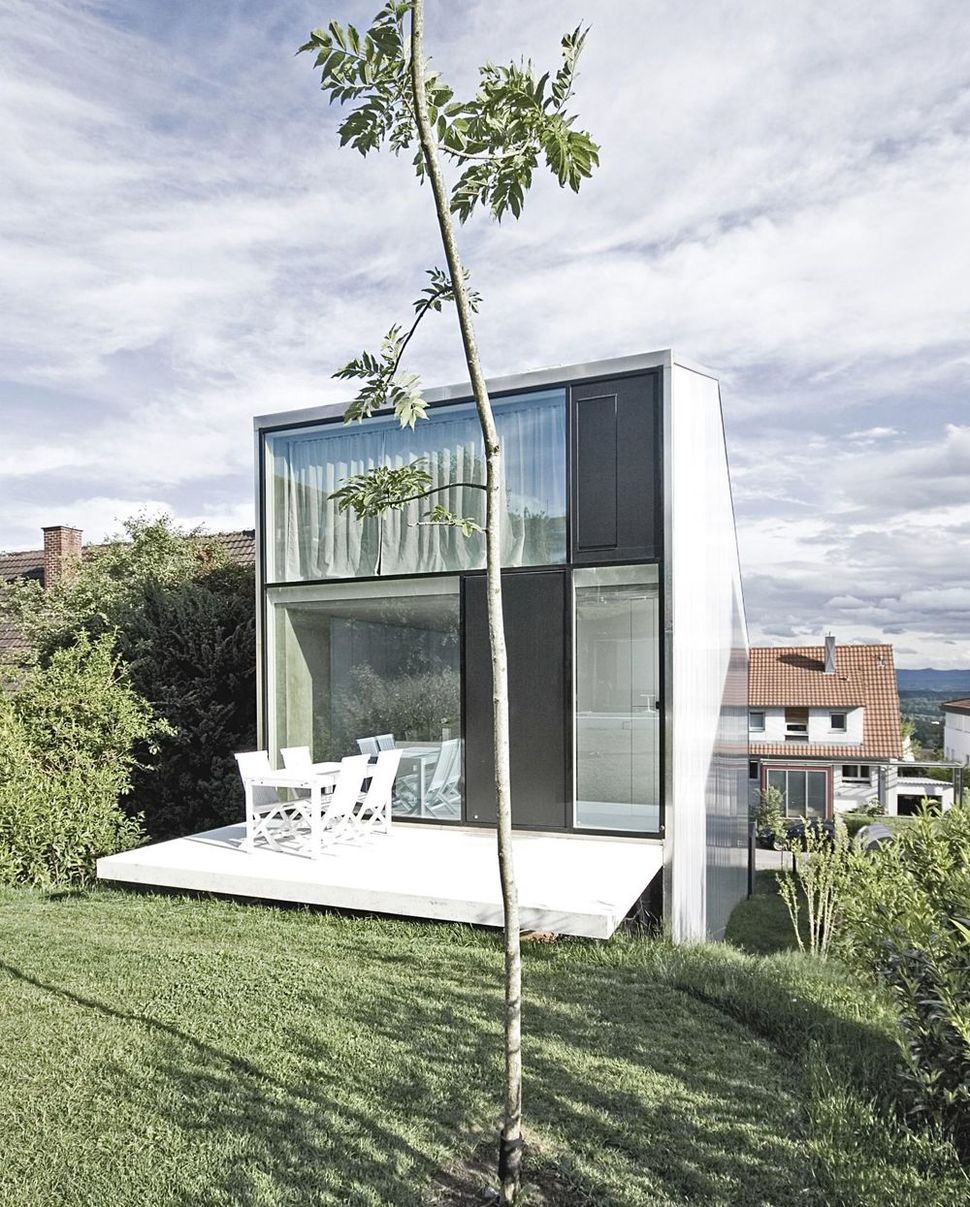
Ascending up the slope, the bottom two floors of the house are obscured in part by the natural shape of the lot and in part because of a deck extending above the lawn on the third level. This third floor contains the home’s public rooms, with an extended living space on the deck beyond. In addition, the roof on this side has a less extreme slope, revealing a fourth floor at the top.
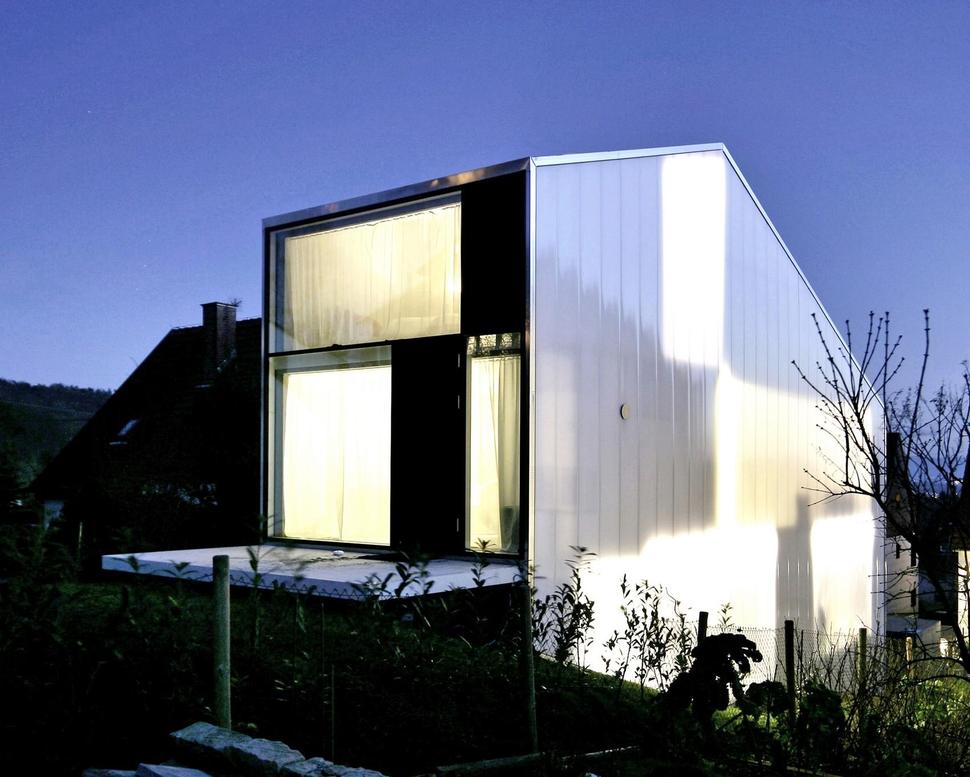
At night, the unique nature of the building’s architecture becomes clear, with light streaming through opaque panels on its long white edges. Where no concrete structure borders the residence’s sides, light from the interior can filter out to create an ever-changing pattern as different rooms are used through the night.

The exterior and interior of the dwelling are actually quite similar, both exhibiting a minimal greyscale theme mostly made up of white panels. The living room is the tallest single room of the home, with a ceiling extended into the next level, creating a balcony outside the master bedroom above.
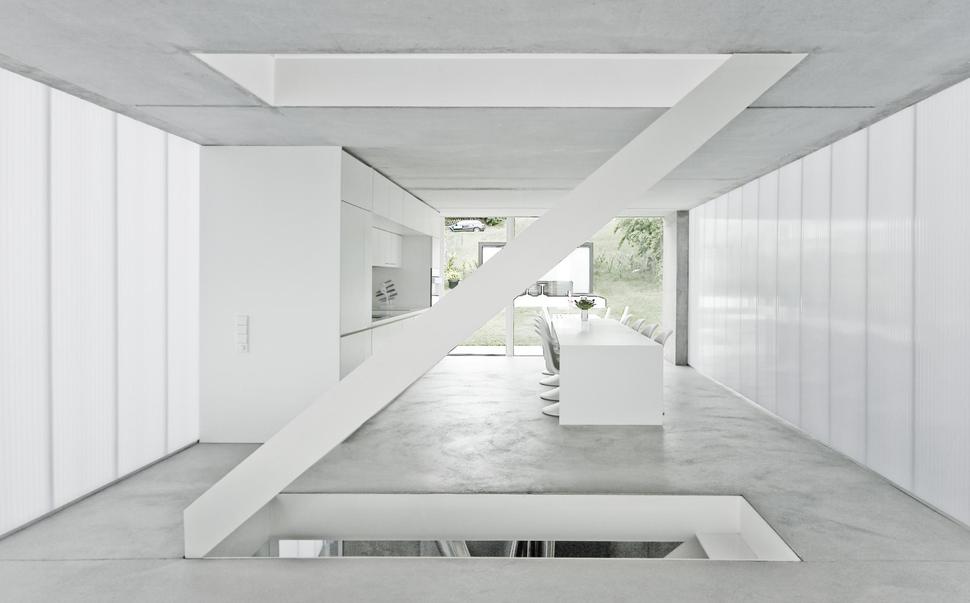
The home’s three flights of stairs are used as a divider between different spaces, especially on the main public level. Here, the diagonal design element combine with the change in ceiling height to delineate the living room and kitchen areas.

Each major room of the residence features a full window wall at one end, and the light streaming through these windows creates spectacular reflections of nature upon the white-paneled walls of each room. In the dining area, a single row of recessed lights gives a permanent cue to where the table should be placed.

Featuring some of the only black furnishings in the entire dwelling, the living room utilizes five matching midcentury modern pieces for an effortlessly comfortable yet uncluttered vibe.
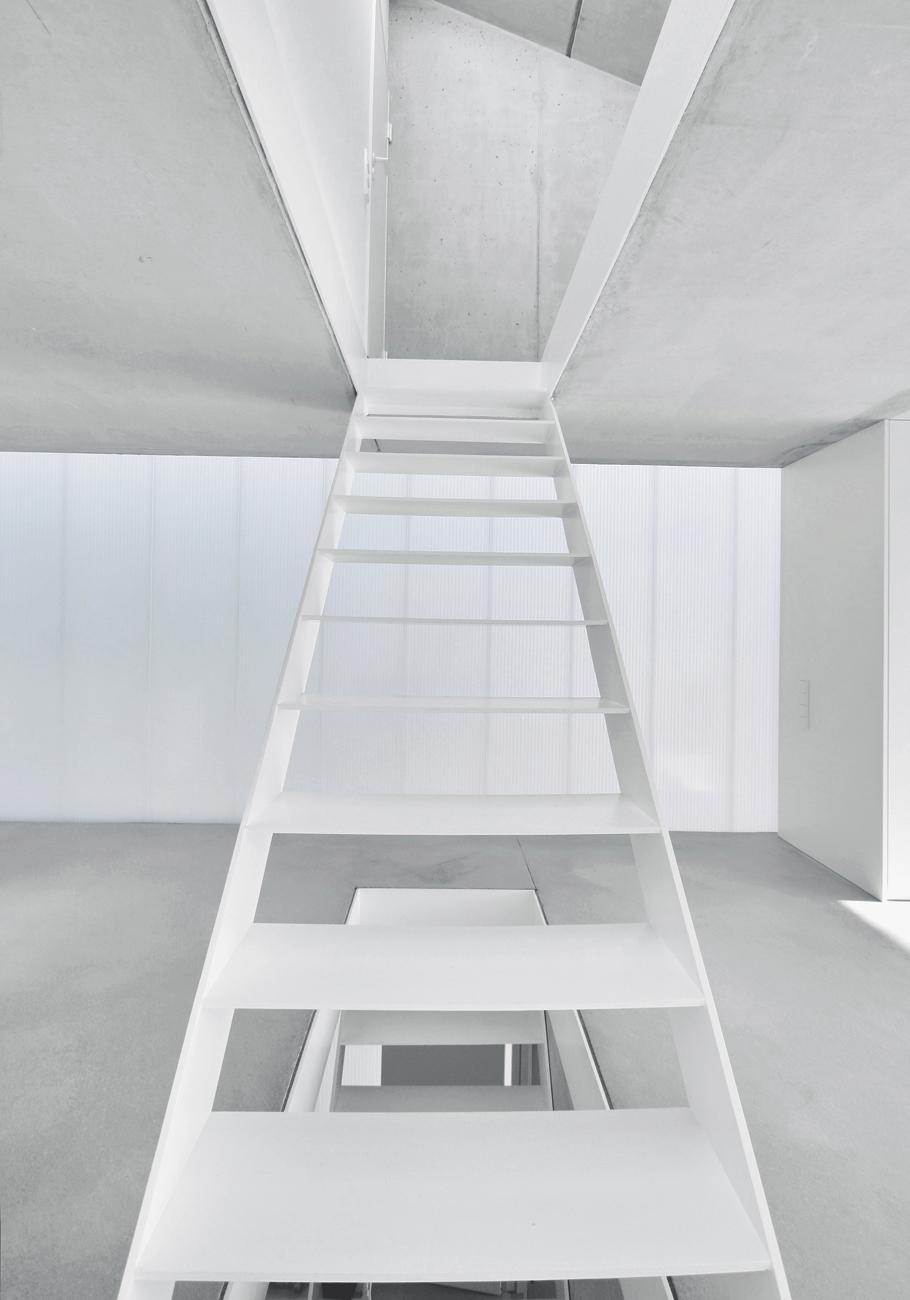
The house’s stairs feature no banisters and extremely thin metal steps, rising through the building in technologically contemporary style while not blocking the open-concept view through any floor.
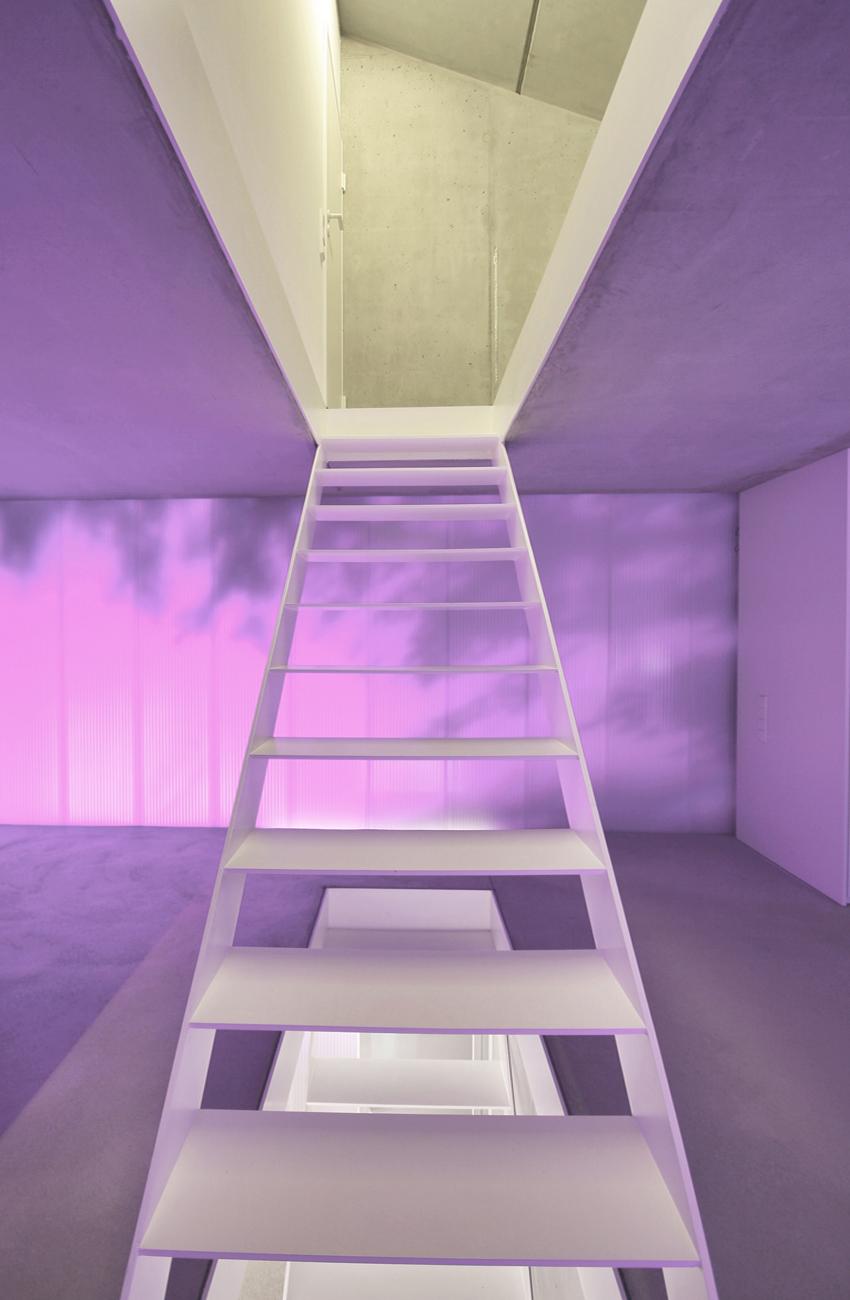
When the curtains close on the main floor, the rooms inside are engulfed in a soft purple glow from the light filtering in through exterior panels, enhanced by the artificial lights of the level itself.
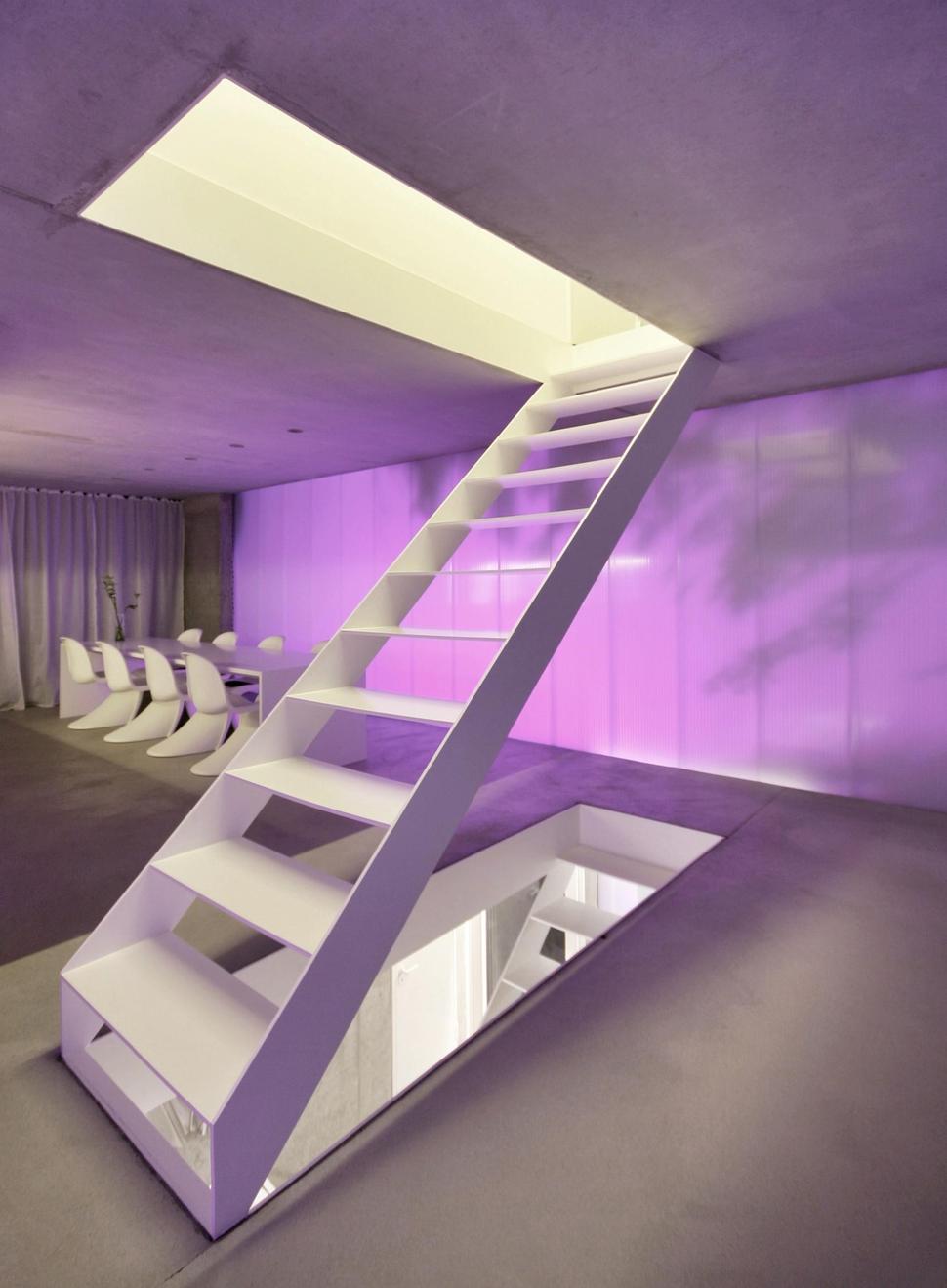
The colorful evening glow of the level is soothing and adds personality to the living room and kitchen areas, helping to transition to nighttime instead of continually confronting inhabitants with the harsh white tone of the walls.
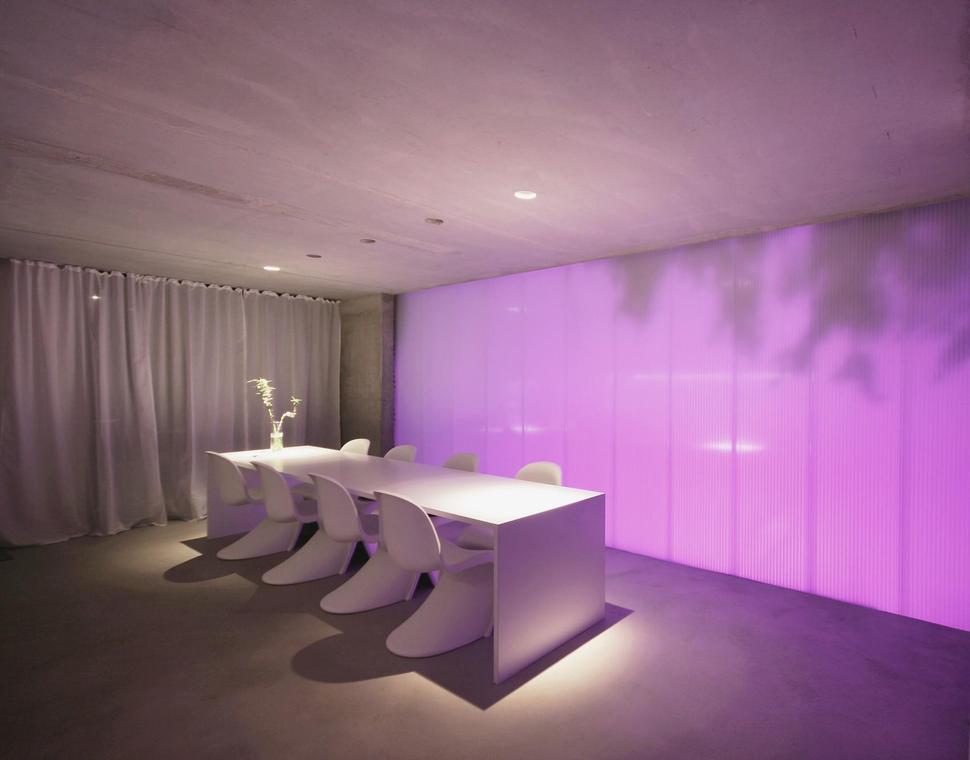
This evening glow creates a perfect atmosphere for a personal, intimate dining experience, even with many guests.
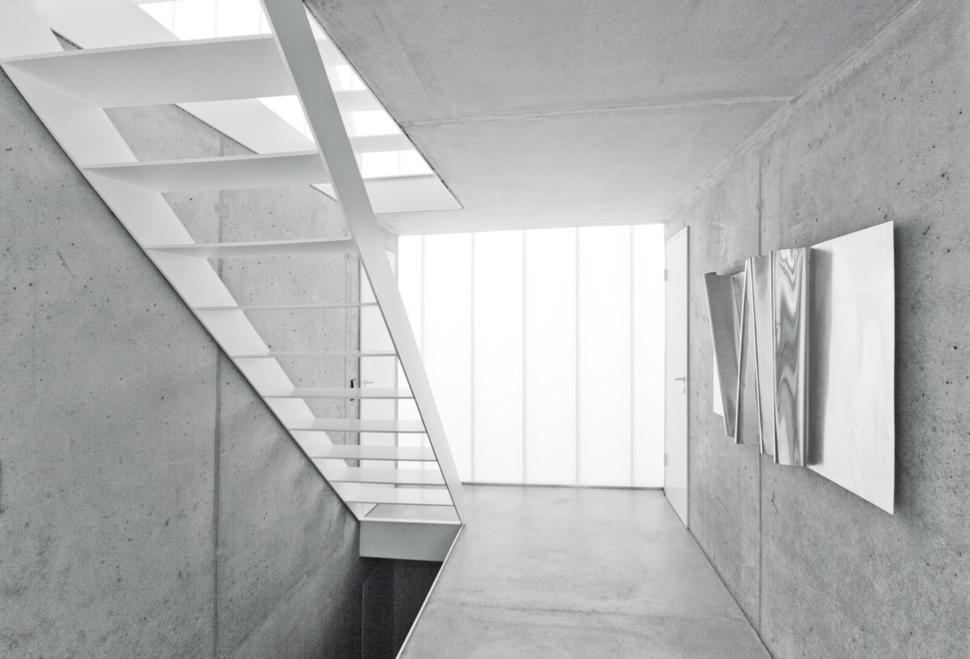
Down one floor from the main public rooms, a more closed-off level features small bedrooms and bathrooms for children or guests. The hallway formed by the divisions between these rooms is illuminated by natural light filtered through the panel walls of the house.
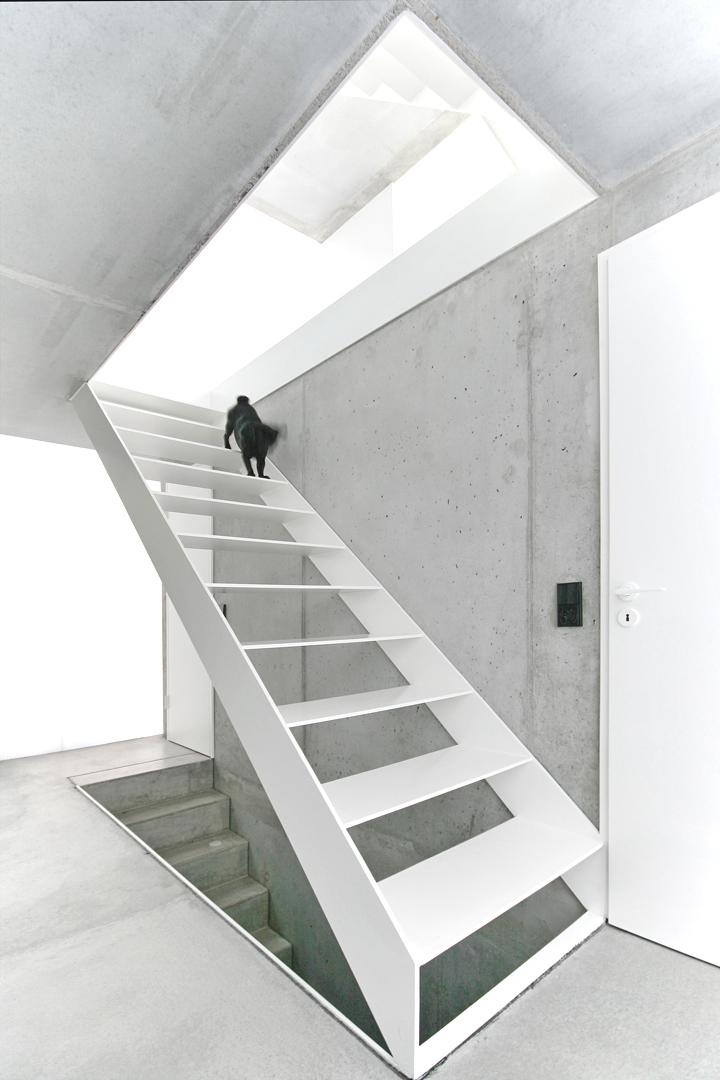
This floor is below the scope of the upper portion of the lawn, eliminating any concerns about prying eyes from above. This makes it a perfect space for children’s rooms and for other private spaces.

Up two levels on the top floor, a spacious master suite is the only set of rooms. Though the floorspace is somewhat constricted here due to the raised ceiling of the living room behind and below it, the room is still spacious and features a sloping profile overhead.
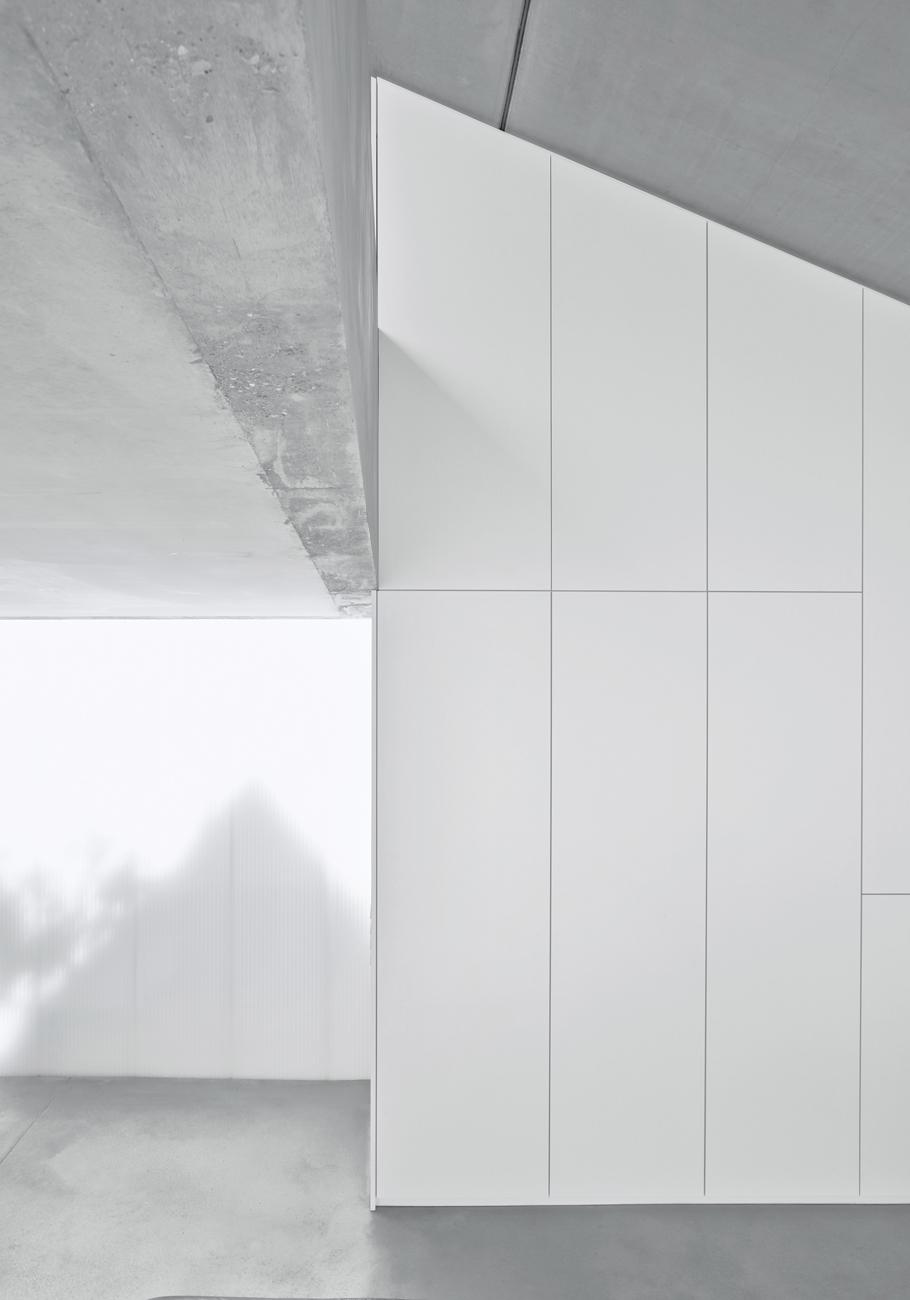
While white wall panels form the sideways boundaries of each room, concrete dominates the floors and ceilings, with some on the walls as well for structural purposes.
Finckh Architekten
